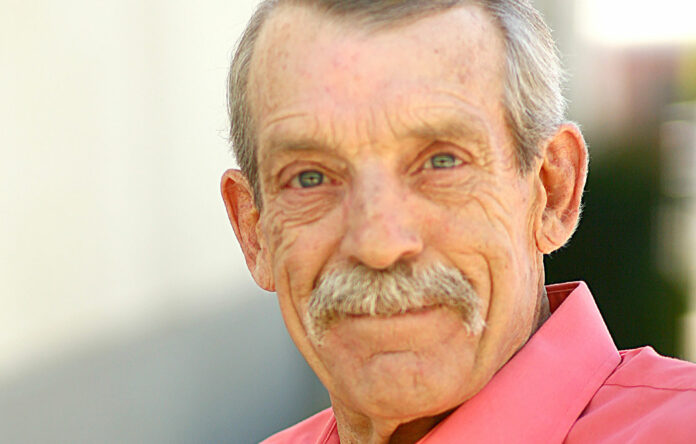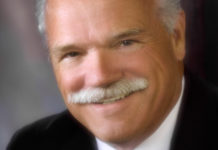I like cemeteries. That is not a ghoulish statement, or at least not meant to be. A cemetery is a walk through history, both recent and long ago, where the changing culture of a town, city or region is written on the headstones of the interned.
As a young boy I joined many other Greenfield youth for morning Red Cross swim lessons at the pool down at Oak Park, and then either stayed at the park or went home and returned for recreational swim in the afternoon. During those summer days, I often went up to the cemetery that had been there long before the pool was installed in 1961; long, long before.
Recently I had reason to spend some time in the cemetery, which sits on a natural ledge just above Oak Park’s swimming pool, and in about an hours’ time I looked at every headstone or marker on the grounds. I don’t know the history of the park and cemetery, but there is a headstone with a death date of 1918, so the cemetery is at least 105 years old, and I suppose given its location the park was established sometime near the same time. (My inability to include facts about two places I’ve known all my life has goaded me to research their histories; when I get the facts straight, I’ll let you know here.)
As expected, I saw many names of people I knew as both child and adult, names of those who existed long before I did and some recently gone who are unknown to me. Let’s visit some names from Greenfield’s past.
I mentioned a death date of 1918. Well, that was when George Washington Foote breathed his last. It is notable that Mr. Foote was a member of the Grand Army of the Republic (GAR), which makes him the only veteran of the Civil War buried in Greenfield. The GAR was not an army in the military sense, but an organization founded in Illinois in 1866 comprised of those who served in the U.S. Army, Navy or Marines during the Civil War; it was disbanded in 1956 when its last member died.
The name and headstone have interested me since childhood; how did a man from so far away end up in Greenfield in the early years of the 20th Century and what caused his death? One would expect just old age, but it must be remembered that in 1918 the Spanish Flu pandemic killed more humans than died in the recent “War to End All Wars.”
His grave is situated in what is the oldest part of Oak Park Cemetery, the plot south and west of the circular vehicle path; or the area closest to the fence separating the cemetery from tilled cropland. The stones in this part of the graveyard (I had to toss in that old usage just because) are old, and many are unreadable. Some are nothing more than hundred-year-old metal markers, which once held a small card with inscribed information about the interned that are now lost to time.
I don’t know the exact number of graves of infants and children, but there are more than a few. One marker, a small metal plate about six inches off the ground, reads simply “Baby Spangler 3 mos.” That marker struck a chord in me more than six decades ago: Who was this baby and how did she, or he, die?
The number of decades-old child graves is a testament to the history of medical advancement in the Valley, as few of the myriad childhood diseases and plagues were effectively curtailed at that time; and many would not be conquered for another 30 to 50 years. Today we would be appalled at the regular occurrence of childhood deaths, but there was a time when such deaths were far more commonplace and families just absorbed the grief and sadness and continued with their lives.
There are two other notable veterans buried beneath the oak trees, the first one Ray G. Smith, who served during the Spanish-American War. While this war did effectively end 400 years of Spain’s influence in the Western Hemisphere, it was in fact a small war. It lasted a mere three months and three weeks, from April 21 to Aug. 13, 1898. The total number of American servicemen involved around 280,000, with a loss of life of 2,061, of which 365 died in battle and the remainder by various diseases.
I don’t know if Pvt. Smith fought in the conflict, but he was surely in uniform at the time. Was he local when he enlisted? Did he migrate to Greenfield after his Army years? How long did he live in the area? Are any of his descendants still in the Valley? Every life has a story.
The second name is Ruth Nichols Thompson. I assume the middle name is a maiden name and her husband was a Thompson and, like Smith, is a common last name and both are known in Greenfield’s early years. I recall in my youth a Thompson who lived on the northeast corner of Oak Avenue and Seventh Street in a big, old rambling home with large trees in the yard; at least they were big to a kid of 7 or 8 years.
At about that same age I visited, with my father, a man who in the upper room of an old two-story house on Ninth Street had a train set running throughout the whole room. That man was George Thompson, manager of the Greenfield Theater. Years later my family moved into that home and I lived there for nine years until the family left town; I returned, many times. I recall no Nichols families in Greenfield; King City, yes; Greenfield, no.
Ruth served among the 21,480 U.S. Army nurses of World War I and that made her part of a minority in America; surely a story under that stone.
Take care. Peace.













